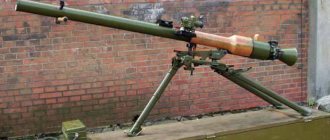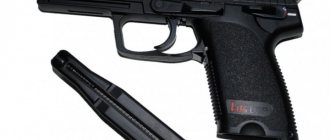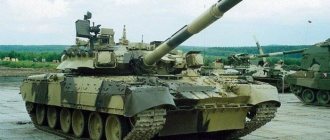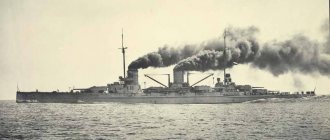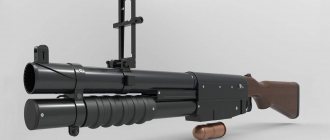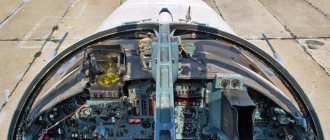One of the distinguishing features of airsoft from other military-tactical games is that in this game all participants have access to a wide selection of pyrotechnic devices, grenade launchers and grenades, which are very similar to real-life combat models. For players who are just beginning to learn the features of this game, we have prepared an article in which we will tell in detail about all the types of grenades and launchers that are encountered.
What types of airsoft grenade launchers can you buy?
To begin with, it is worth mentioning that grenades and grenade launchers in airsoft are not only pyrotechnic
, but also
gas action
. For a simpler understanding, we can divide all types of grenades and charges into disposable pyrotechnic and reusable gas ones. We will return to this issue a little later. We will begin our story with the simplest examples of airsoft pyrotechnics.
It is noteworthy that most airsoft pyrotechnics are powered by firecrackers. At the legislative level, such products are not considered hazardous. However, there is another part of the law that completely prohibits the manufacture of pyrotechnic devices by private individuals. Based on this, it should be understood that only certified products can be used in airsoft games.
Main types of airsoft hand grenades:
- Offensive airsoft grenades
- Smoke airsoft grenades
- Airsoft noise grenades
Smoke samples differ little from their combat counterparts. The noticeable difference is that most airsoft smoke grenades have a lighter cardboard body.
Offensive samples are based on firecrackers of the Corsair 4 or 6 type and have a damaging element in the form of dried peas or plastic balls. Noise models also use firecrackers in their designs, but they are slightly more powerful than offensive models and do not have any damaging elements. As the name suggests, their purpose is to create a lot of noise. All grenades have approximately the same level of explosion delay from 3 to 5 seconds.
Types of airsoft grenades based on their operating principle:
- Cardboard grenades with a pin that can be pulled out
- Plastic grenades with an active pin
- Reusable airsoft grenades (gas)
The first grenade that most airsoft players encounter in the early stages is most often the RGS-4
or
RGS-6
. Such grenades have a very simple design and consist of a cardboard tube with a pin. The principle of operation of such a grenade is very simple. The pin has the structure of a match. When it is removed, a spark occurs that ignites the firecracker inside the product. Thus, an explosion occurs.
The number in the name (RGS-4 or RGS-6) can help you understand which firecracker is used inside. The damaging element in such grenades is dried peas. When a product explodes, it often disintegrates and does not reach the target, because of this it is generally accepted that the enemy is considered killed if a grenade explodes no further than 3 meters from him, provided that no cover blocked the space between the fighter and grenade. Over time, this destruction rule has become relevant for all products that simulate an explosion.
The obvious disadvantage of these grenades is that their body is very susceptible to any influence of moisture. This drawback is easily overcome by samples with an active pin, which almost always have a plastic case.
Such grenades often almost completely copy the principle of operation of military grenades. Their characteristic difference is that the explosion does not occur while the safety bracket is held. From time to time, such grenades completely copy the appearance of some combat prototypes.
In addition to the above samples, there are also models of reusable grenades
. We mentioned them a little earlier. The principle of operation of this type of grenade is very simple. The permissible number of balls is charged into their body and gas is filled. After the mechanism is activated, the gas initiates the release of the balls outward. After this, the hand grenade can be picked up and used again, but, alas, it cannot always be found after being thrown.
What are airsoft mines?
Before moving on to the story of launchers, it is worth mentioning that mines are used in airsoft games. In their design, they are completely similar to offensive grenades, with the only difference being that they are detonated immediately after the pin is pulled.
What types of grenade launcher shells are there?
- Pyrotechnic charges for grenade launchers
- Gas charges for grenade launchers
Like grenades, grenade launchers, or rather charges for them, there are 2 types: pyrotechnic and gas. The category of pyrotechnics can also include mortars, which have a principle of operation similar to both designs.
What airsoft mortars can you buy?
The mortar is a replica of a combat unit to which a compressed air cylinder is connected. The mortar is always operated by 2 people. One of them breaks the pin on the charge and pushes it inside the gun, and the second supplies compressed air into the pipes, thanks to which the projectile flies out of the gun pipe.
What airsoft grenade launchers can you buy?
Moving on to grenade launchers, first it’s worth talking about simpler representatives of this type - pyrotechnic models. Most often, such grenade launchers are used under the guise of anti-tank models and are equipped with charges in the form of a long cardboard tube, in the depths of which a cruise missile carrying a charge is hidden.
The initiation of such a shot occurs due to the closure of the electrical network inside the grenade launcher. When you press the trigger, the charge is supplied with current drawn from the battery inside the grenade launcher. After this, a shot occurs. The charges with which the pyrotechnic grenade launcher is equipped explode after a time of 3-4 seconds.
An interesting feature of such a system is that it can be purchased separately and installed on almost any type of grenade launcher, which was previously exclusively gas-powered. This applies not only to large anti-tank weapons, but also to small under-barrel models. The design of gas grenade launchers is divided into several parts. Most often they are small samples of under-barrel and anti-personnel grenade launchers. The trigger mechanism of this weapon is designed only to push through the cartridge case. The main complexity of this type of design lies in its charges.
The charge of a gas grenade launcher can be divided into 2 main parts - a cartridge case and a projectile. Both of these positions are purchased separately from the launcher and, if the projectile for such a weapon is disposable, which is quite logical, then the cartridge case itself is always reused. In order to avoid confusion, it is worth talking about the process of charging and firing from such equipment. Before firing, the projectile is pre-placed in the cartridge case, and the cartridge case itself is filled with gas. After which the entire structure is placed into the grenade launcher. After the shot, the cartridge case is removed and reloaded again. There are several types of such sleeves. They differ in the type of grenade launcher used and in their power supply. The fact is that various cartridges can be charged with both CO2 gas and weaker Green gas
.
Review of airsoft grenade launchers
The bulk of such products imitate military weapons, sometimes even their parts are used (as in the RPG-26, for example). However, as a filling for grenades, they use airsoft six-millimeter plastic balls that fly apart under gas pressure. From 48 to 120 of them can fly out at a time. At the same time, they fly at a distance of up to hundreds of meters, and the grenade itself (cartridge) remains in place. Taking out five people with one shot is quite possible.
The standard caliber for most airsoft grenade launchers is 40 millimeters. Cartridges filled with gas compressed under pressure are made of metal.
A pyrotechnic effect is used to simulate a grenade explosion. Grenade launchers, which are mounted under the barrel or on the muzzle, are suitable for certain types of machine guns or rifles.
VVD kit
The MAX CO2 kit increases the number of shots, but unfortunately does not solve the problem of CO2 pressure drop at low temperatures. If you want your grenade launcher to fire equally in all weather conditions, you will need to install a VVD kit.
VVD kit
As a bonus, in addition to the stability of operation, the VVD kit slightly increases the range of the shot , and also allows you to make even more shots from one filling of the VVD cylinder.
Kit installation
The VVD kit consists of 3 main components:
- nozzle designed to work with high-pressure engines;
- sighting device adapted to the flight path using VVD;
- butt-cylinder with built-in regulator.
Nozzle
It is best to start installing the VVD kit by changing the stock. To do this, loosen the fixing ring, unscrew the screw fixing the thread and unscrew the stock without any effort.
Then, effortlessly screw in the butt-cylinder until the end. We align it so that the regulator switch faces down and fix it with a screw.
The screw is located in front of the handle closer to the butt
Next we will change the nozzle and the sighting bar. First of all, we unscrew the gas chamber with the sighting device from the grenade launcher. We remove the brass coupling and put it in a distant drawer, since it will not be useful with the VVD.
We remove the grenade launcher from the safety lock and use the button to open the barrel. We hold the trigger and simultaneously press the piston. While holding the piston, release the trigger. The piston must remain pressed.
Now to remove the nozzle you just need to unscrew 4 screws. When removing the nozzle, be careful not to lose the spring. She should stay put.
4 screws are located on the trigger side
Next, carefully install the high pressure nozzle from the kit into place and secure it with screws. During installation, make sure that there are no distortions. The nozzle should be flush with the surface of the side. Then close the barrel and tighten the nozzle with 4 screws. To avoid distortions, we recommend tightening the screws diagonally.
Next, unscrew the brass plug at the top of the grenade launcher, being careful not to lose the O-ring.
Without tightening the screws, connect the grenade launcher to the Standalone platform and screw in the sealing coupling, after which we tighten the chassis screws.
Now you can screw on the new sight , which also serves as a plug for the pressure supply port from the former CO2 tank.
Installation of the VVD kit is completed.
Operation of a high pressure cylinder
In order to screw or unscrew the cylinder, you need to release the pressure by lowering the switch down. To apply pressure to the grenade launcher, you must move the switch to the rear position.
If the butt plate is pointing to the side , it can be adjusted by loosening the 3 screws on the brass ring. You can do this even with a filled cylinder.
The cylinder is refilled in the same way as any other high pressure cylinders . We usually fill them up at paintball clubs or fire departments. The cost of refilling one such cylinder is usually about 50 rubles.
Types of grenade launchers
There are similar weapons:
- manual (used independently, the appearance resembles a pistol);
- under-barrel (attached under the barrel of a rifle or machine gun on a special base);
- muzzle (attached to a special flash suppressor, on the muzzle; it does not require a cartridge when firing).
The most popular products are grenade launchers of the under-barrel type. They can be designed for installation on weapons with a short or long barrel, while the launch systems of both devices are autonomous. The flight range of the balls is from 20 to 40 meters. Most of the devices are of the single-shot type, but now six-shot (revolving type) grenade launchers are also produced (for example, MGL-6 “RECCE”). They have a rotating drum for six cartridges, for this reason they are also called drum grenade launchers.
GP-30 underbarrel grenade launcher
There are also under-barrel products of a slightly different design. Their simulated shot is fully consistent with a military weapon - right down to the ejection of a grenade. Here, in a metal cartridge with compartments for compressed gas, a grenade with balls inside is inserted. It can fly 40-60 meters before exploding (depending on the gas used). However, such models, which appeared not so long ago (6 years ago), are not yet mass produced, since sufficient safety for players has not been developed. In USC, for example, such weapons cannot be used at all.
Device
The barrel of the product is equipped with a special bracket that allows it to be attached to an airsoft drive. There are also sighting devices and a release mechanism - with its help the gas valve opens.
The grenade, which is a cartridge, is filled with gas under pressure. It could be:
- compressed ordinary air;
- Green gas;
- Red gas;
- Top Gas and others.
Design of the GP-30 airsoft grenade launcher
Principle of operation
A cartridge filled with balls is inserted into the barrel and held there by a latch. When you press the trigger, the firing pin hits the capsule (or rather, its simulator), the gas comes out with force, pushing out the balls and causing their entire mass to fly forward with acceleration.
Initiating a pyrotechnic charge
In ball grenade launchers, this happens similar to the firecracker used during the New Year holidays. That is, the design has a cord that hooks onto the protrusions of the mortar. During the shot, it begins to move, causing the igniter to fire, which is impaled on the tip of the firing pin.
Types of shots
Charges (or shots) can be one of three types:
- Light and noise with energy (muzzle) 24 joules and flight up to 75 meters. The charge weighs 29 grams and flies at a speed of 41 meters per second.
- Smoke with energy (muzzle) of 25 joules and flight up to 90 meters. The charge weighs 43 grams and flies at a speed of 34 meters per second.
- Ball (using plastic balls) with an energy (muzzle) of 24 joules and a flight of up to 90 meters. The charge weighs 37 grams and flies at a speed of 36 meters per second.
Standalone platform and MAX CO2 adapter
You can increase the volume of shots without reinstalling the cylinder using the Standalone platform and the MAX CO2 adapter , which is installed in the butt of this very platform.
MAX CO2 adapter
Installation on a grenade launcher
The platform and adapter are installed on the grenade launcher in the following way:
- We remove the plug on the grenade launcher.
- We install the grenade launcher on the Standalone platform.
- We fix the platform with a brass screw, thus combining the gas tanks of the grenade launcher and the platform.
- We put the MAX CO2 kit on the stock pipe.
After installing the MAX CO2 kit, place 2 cans in it. Another additional cylinder can be installed in the sighting device, but it should be pierced last.
That is, first you make 15 guaranteed shots using 2 cylinders in the butt, and then punch another cylinder in the aiming bar and fire another 10 shots. And you can fire 25 shots without changing the cylinders in the grenade launcher.
Review of popular models
VRGPS 50
VRGPS 50 - shot for a hand-held grenade launcher. Used once. Peas are used as a weapon of destruction. Pyrotechnic element – based on 6 Corsair. The explosion is carried out with a slowdown of 4 seconds. The cardboard tube weighs 0.45 kilograms (warhead - 0.12 kilograms).
Can be used together with RPG-26 (subject to modification of the tube). The presence of plumage allows you to shoot accurately up to 100 meters. This charge is of the expelling type.
AK series
Many airsoft fans prefer the good old Kalashnikov. Manufacturers offer two models of grenade launchers for it:
- GP-30 from the King Arms brand is all metal except the handle. Charges use 30 millimeters. And Russian manufacturers made this model 40 millimeters. It is suitable for AK-47 and AK-47S and imitates its combat counterpart as closely as possible. Even the grenade is placed directly into the barrel, which simplifies loading. On the right is the sight rail. Metal fasteners are used to install the device on the barrel of an AK (in front of the forend). Disconnection occurs at the touch of a button.
- GP-25 is an under-barrel ball-type product with a 12-centimeter rifled barrel, suitable for the AK-74. On the left side of the grenade launcher there is a safety lock with two positions. The trigger has a trigger. There is a sight and a range scale. Shoots on Green Gas (up to 25 meters). The kit includes a cartridge grenade (imitation VOG-25) with 40 balls. Manufacturer – Dboys (China).
Video review of airsoft grenade launchers GP-25 and GP-30:
RPG-26
As already mentioned, this grenade launcher not only imitates the famous Soviet Aglen firearm, but is also made from its original parts - even with branded stickers. The belt and back cover are also standard.
The length of the product is 0.77 meters. Shoots TAG cartridges, as well as any standard 40mm front loaded loads.
The trigger mechanism of the steel airsoft grenade launcher, the sight, the safety catch and the preparation for firing are exactly the same as on the combat counterpart.
Video review of the RPG-26 airsoft grenade launcher:
How much does an RPG cost?
It is well known that the most popular anti-tank weapons are hand grenade launchers. They are produced by many countries, and are in service in even more countries. But not everyone knows exactly how many RPGs of various models have been produced and how much their production costs.
WHAT ARE RPGs?
In 2012, the analytical group Defense IQ at the NATO bloc published a study “Armored fighting vehicles 2012: development prospects.” A survey was conducted of 196 leading experts in the field of armored vehicles from various countries and officials from the Ministry of Defense. At the same time, 69% of specialists were employees of development companies, 19% of respondents were from the USA, and 28% were from the UK.
As a result of the research, the degree of danger for armored vehicles of various anti-tank weapon systems was established.
In first place are land mines and improvised explosive devices (95% of experts), in second place are anti-tank grenade launchers (74% of experts), in third place are small arms, including large-caliber weapons. In last place are battle tanks and robotic combat vehicles.
Such results are quite understandable. Fighting today is almost always local in nature. They are conducted at the base of strong points in small mobile groups. Such points are located mainly in populated areas where the use of heavy weapons is difficult, if not “virtually impossible.” In such a situation, the small number of personnel must be compensated by equipping units with weapons that allow them to successfully fight enemy armored vehicles and fortifications. Anti-tank and anti-personnel grenade launchers, which have become widespread in many armies of the world, became such weapons.
Thus, anti-tank grenade launchers (RPGs) have been adopted into service in more than 50 countries. They have proven themselves to be the most effective anti-tank weapon in service with a platoon and even an individual soldier. The grenade launcher allows you to hit both armored targets and fortifications. It remains the cheapest anti-tank weapon and allows the infantryman to fight in a variety of climates and terrain.
Modern armies are equipped with two types of RPGs:
- disposable, in which the launch of a tank destruction weapon (cumulative grenade) is carried out from a disposable transport and launch container;
- reusable - the grenade is launched from a special reusable launcher.
Abroad, the main developers of these weapons are considered to be the companies MVB and Dynamit Nobel GmbH (Germany), Matra Manuhrin Defense (France), Bofors Dynamics (Sweden), IMI (Israel), OTO Melara (Italy), Hunting Engineering (UK), Instalaza SA ( Spain), Talley Defense Systems (USA), Somchem (South Africa), etc.
DISPOSABLE GRENADE LAUNCHES
RPG LAW 80 (Great Britain) was developed by Hunting Engineering and was put into service in 1983. In 1997, its production was discontinued. The reason is insufficient efficiency when firing at modern combat vehicles.
LAW 80 is a disposable grenade launcher, the grenade of which is placed in a transport and launch container that has a telescopic design. A special feature of its design is the presence of a 9-mm sighting rifle mounted under the launch container, which has a magazine for five rounds. A shot from an anti-tank weapon is preceded by a shot from a sighting rifle. Firing from a rifle is accompanied by minor unmasking effects, but greatly increases the probability of hitting the target (three times) at a range of 300-400 m.
The Armbrust RPG (Germany) was developed by Messerschmit-Bolkow-Blohm (MBB), adopted by the Bundeswehr in 1988 and is still being manufactured. This is a disposable system equipped with a cumulative grenade launched from a transport and launch container. This is the first Western European grenade launcher, the licensed production of which was organized (in 1988) in Indochina (Singapore) by Chariered Industries of Singapore (CIS).
The Panzerfaust 3 family of RPGs (Panzerfaust 3T-600, Panzerfaust 3LW, Panzerfaust 3LW-HESH, Panzerfaust 90 Matador) and Bunkerfaust 3 were created by Dynamit Nobel AG and are intended to arm various types of troops.
The grenade launcher can be equipped with three types of grenades:
- DM12A1 – cumulative grenade;
- Pzf3T - cumulative grenade with a tandem warhead;
- Pzf3T 600 is a modernized cumulative grenade with a tandem warhead.
For the Bunkerfaust 3 sample, a warhead in anti-bunker equipment was created.
As sighting equipment, an IS-2000 optical sight from Simrad is used, which allows you to correct gunner errors, or a KN20SF thermal imaging sight with an image intensifier.
RPG RGW 60 (Germany) was designed by Dynamit Nobel AG and adopted by the Bundeswehr. They are equipped with units of the Airborne Forces, special operations forces and police. There are several types of grenades for a grenade launcher, including: cumulative, cumulative with a tandem warhead, concrete-piercing and with a warhead equipped with rubber submunitions.
The Apilas RPG (France) was developed by Giat Industries, a subsidiary of Matra Manurhin Defense, to combat advanced armored targets.
The grenade launcher is disposable and has a transport and launch container made of reinforced synthetic fiber with an aluminum liner. It is equipped with a cumulative grenade with a single warhead.
RPG WASP 58 (France) was developed by Hellenic Arms Industrie SA (EBO) and adopted by the French army in 2001. This is a lightweight anti-tank grenade launcher, designed primarily to destroy lightly armored vehicles. For training weapon operators, it is equipped with an insert barrel, which is fired with an 18x86 mm cartridge.
RPG family C-90-CR (C-90-CR-RB, C-90-CR-AM, C-90-CR-FIM, C-90-CR-BR, C-90-CR-IM) (Spain ) was created by Instalaza SA and adopted by the Spanish army. The weapon is designed to combat armored targets, concrete, brick and earthen defensive structures. The system is equipped with cumulative grenades (C-90-CR (M3), cumulative grenades with high armor penetration (C-90-CR-RB (M3), cumulative fragmentation grenades (C-90-CR-AM (M3), smoke-generating incendiary grenades (C-90-CR-FIM (M3), anti-bunker grenade (C-90-CR-B3 (M3),
This single-use grenade launcher consists of a transport and launch container, a trigger mechanism, a folding shoulder rest and front handle, an optical sight, a weapon carrying belt, a grenade and an expelling charge.
RPG ALCOTAN-100 (Spain) was developed by Instalaza SA and adopted by the Spanish Ground Forces. This disposable weapon is designed to destroy armored vehicles and enemy personnel.
The sample consists of a transport and launch container made of composite material, a grenade, a VOSEL day/night vision sight, a laser rangefinder and a trigger mechanism.
The grenade launcher is equipped with three types of grenades:
- with cumulative tandem warhead, index ALCOTAN TANDEM;
- with an anti-bunker warhead ALCOTAN ABK, equipped with 2500 ready-made fragments;
- with dual-purpose warhead (anti-tank/anti-personnel) ALCOTAN BV.
RPG PF89-1 (China) was designed by NORINCO and put into service in 1972. The grenade is launched from a fiberglass transport and launch container, on which is attached a trigger mechanism, a simple optical sight, a rotary handle and a belt for carrying weapons. Grenade caliber – 80 mm
RPGs “Shipon-1” and “Shipon-2” (Israel) were created by IMI and entered service in 1999. The main purpose of these weapons is combat operations in urban environments.
The grenade launcher is equipped with grenades designed to destroy concrete, brick and earthen protective structures, homogeneous rolled armor 76 mm thick. The ammunition load includes cumulative, tandem cumulative and bunker-busting grenades. RPGs "Shipon-1" and "Shipon-2" are equipped with a fire control system with an optical or night sight, a laser rangefinder, a temperature sensor, a wind speed sensor and a microprocessor.
RPG AT4 (Sweden) from SAAB Bofors Dynamics was adopted by the Swedish army in 1997. It is designed to combat armored vehicles, shelters and long-term firing points. This weapon was developed on the principles laid down in the American M72 grenade launcher and the Swedish “Carl Gustav”.
The grenade launcher consists of a transport and launch container with a pistol grip and trigger mechanism, an expelling charge and a cumulative grenade. The sight is mechanical frame type.
For combat operations in urban environments and shooting from enclosed spaces, the company created the AT4-CS variant with a liquid countermass located behind the expelling charge. When firing, the liquid is partially thrown back, and part of it evaporates, significantly reducing the recoil and sound effect when firing.
The M72 A1 RPG (as well as A2, A3, A4, A5, A6, A7) was developed by Talley Defense Systems, and its first model was adopted by the US Army back in 1960. The M72 and its variants are the world's first disposable grenade launcher, which creatively uses the German idea of a disposable anti-tank weapon from the end of World War II.
US specialists developed this idea, abandoning the recoilless design of launching a grenade and using the idea of launching using a solid propellant rocket engine, thus using a transport-launch container for the first time. The design of this anti-tank grenade launcher was often copied when creating similar models by arms companies around the world.
REUSABLE ANTI-TANK GRENADE LAUNCHES
RPGs V-300 Mk1 and V-300 Mk2 (Israel) were developed by IMI and adopted by the Israeli Army. In a modernized version, this weapon is used in parts of the US Marine Corps and is produced under license by Talley Defense Systems and McDonnell Douglas under the name SMAW. The B-300 uses a reusable launch tube with a nozzle in the tail.
RPG M65 (Spain) was created by Instalaza SA and adopted by the Spanish army. A special feature of its design is its electric trigger mechanism, in which the electrical circuit between the grenade and the launcher is closed when the grenade launcher is loaded. The RPG is equipped with a day/night vision sight. The weapon uses three types of grenades:
- anti-tank cumulative, index CHM-65;
- anti-personnel and for combating lightly armored targets, index MV-66;
- smoke, index FIM-66.
RPG "Folgore" (Italy) was developed by OTO Melara and adopted by the Italian army. This is a reusable weapon designed to be fired from a rest (or shoulder). It is a reusable launch tube with an optical sight, mounted on a folding bipod. Shooting is carried out with cumulative grenades.
RPG "Carl Gustav" (Sweden) from SAAB Bofors Dynamics AB has been adopted by the armies of a number of countries. The design of this grenade launcher uses ideas and technical solutions previously incorporated in the Carl Gustav Pfg m/42 anti-tank rifles of the Second World War.
SAAB Bofors Dynamics AB specialists developed and delivered to customers three models of this weapon:
- "Carl Gustav M1" - the basic model, adopted for service in 1948, launcher weight - 16.35 kg;
- “Carl Gustav M2” – model created in 1964, equipped with a 2x optical sight; launcher weight – 14 kg;
- “Carl Gustav M3” - model developed in 1991. The main difference from its predecessors is a barrel made of composite material with a steel liner, in which rifling is made. The weapon is equipped with a 3x optical sight and has a mass of 10 kg.
A number of grenades have been developed for the grenade launcher, including cumulative, tandem cumulative, illuminating, smoke, armor-piercing fragmentation, fragmentation with ready-made submunitions, and training.
RPG FT5 (South Africa) was designed by Somchem and adopted by the South African Army. This weapon includes a reusable launcher with a simple grenade sight. Shooting is carried out from the operator's shoulder. The following grenades have been developed for the grenade launcher: cumulative (HEAT type), cumulative tandem (HEAT/RA type) and multi-purpose (HEMP type).
RPG "Panzerfaust 44 Lanze" (Germany) is a modernized version of the German anti-tank grenade launcher from the end of World War II. Development began in 1960, and in the mid-1970s. The model was adopted by the Bundeswehr. RPG "Lanze" until the early 1990s. has been modernized several times.
Lanze is a reusable weapon. The barrel is equipped with a trigger mechanism, a control handle, a shoulder rest and a mechanism for attaching an optical sight. The sample has a simple sighting device, made in the form of a barrel with a trigger mechanism and a magazine for five tracer cartridges. This device is mainly used when the optical sight is damaged. The launch of a cumulative grenade during firing is preceded by a shot from the sighting device with a tracer cartridge.
A shot from a grenade launcher is carried out by an expelling powder charge. To compensate for recoil, a countermass is simultaneously ejected from the launch tube. Firing is carried out by an over-caliber cumulative active-reactive grenade of 67 mm caliber. The caliber of the launch tube is 44 mm.
COST AND PRODUCTION OF RPG
At the end of the 20th and beginning of the 21st centuries, in foreign armies the main attention when preparing troops for combat operations was paid to anti-tank defense. In the Ground Forces, this task is accomplished by using various fire weapons, including artillery pieces, tanks, mine explosive devices, anti-tank guided systems, large-caliber rifles and the most common means - anti-tank grenade launchers.
Table 1. Equipping foreign armies with anti-tank grenade launchers
Armies are being intensively supplied with disposable and reusable anti-tank RPGs, which are manufactured by arms companies in large batches (see Table 1). Today, more than 40 models of anti-tank grenade launchers are supplied to various armies around the world.
Table 2. Production and export of foreign anti-tank grenade launchers
Their production is organized at modern enterprises of development companies, and their licensed production has also been launched in other countries (see Table 2). The number of grenade launchers supplied to the armies of the world by industry is shown in table. 3.
Table 3. Number of grenade launchers supplied to the world's armies
At the same time, foreign arms companies are improving the tactical and technical characteristics of RPGs. Along with cumulative grenades, special types of ammunition are being created: bunker-anti, illumination, smoke and riot control, as well as thermobaric warheads.
The cost of modern anti-tank grenade launchers for disposable samples ranges from $1065 US (RPG M72 A4/A5/A6) to $5010 US (RPG Pzf 3) and 6500 (RPG "Bunkerfaust"). For reusable ones - from 9321 US$ (RPG V-300) to 1519 US$ (RPG S90) (see Table 4).
Table 4. Prices for foreign anti-tank grenade launchers
Victor Ron “Weapons” No. 3-2013
